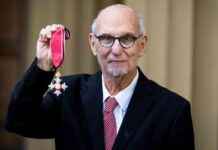Decoding FIRE: Ramit Sethi’s Perspective and Alternatives
For multi-millionaire and best-selling author Ramit Sethi, the realization that he didn’t have to work anymore was a game-changer. At 42, Sethi’s investments were generating more income than his expenses, leading to financial independence. In a recent YouTube video, the host of Netflix’s How To Get Rich shared his insights on the FIRE (Financial Independence Retire Early) movement, which combines established financial concepts developed by experts.
Financial Independence and the Crossover Point
According to Sethi, financial independence is achieved when you reach the “crossover point,” where your investments produce enough income to cover your expenses. This idea of “money making money” was initially introduced by Vicky Robin and Joe Dominguez in their influential book Your Money or Your Life. Once you reach this point, Sethi believes you have the freedom to choose whether to work or not, as your investments can sustain your desired lifestyle. These concepts form the foundation of the FIRE movement, which is divided into two main branches: Lean FIRE and Fat FIRE.
Lean FIRE vs. Fat FIRE
Lean FIRE is geared towards individuals who are content with living on a modest $30,000-$50,000 per year, adopting a minimalist lifestyle and rejecting materialism. On the other hand, Fat FIRE appeals to those who aspire to a more luxurious lifestyle sustained by their investment returns. Both paths lead to financial independence, but the spending and lifestyle choices differ significantly.
Challenges within the FIRE Movement
Despite the benefits of the FIRE movement in boosting savings rates, Sethi points out some inherent flaws. One major issue is the obsessive focus on reaching a specific financial goal by a set deadline. Many members of the FIRE community experience stress and depression, mistakenly believing that achieving a “magic number” will bring instant happiness. Sethi emphasizes that money alone does not equate to happiness and that living a rich life involves more than just accumulating wealth—it’s about pursuing your passions without financial stress.
The Danger of Extreme Frugality
Another significant problem within the FIRE community is the extreme frugality embraced by some members. Sethi recounts a couple who amassed a $4 million fortune by their early 50s but struggled to enjoy their wealth due to their overly frugal habits. The lack of understanding of how to spend wisely during the accumulation phase is a common issue among many in the community. Sethi warns that failing to develop this essential skill early on can lead to a rigid mindset that views accumulation as the sole financial goal.
The Stigma Around Spending
Moreover, the FIRE community often glorifies minimal spending, which can foster unhealthy habits. Sethi highlights how some individuals stress over even minor purchases despite having significant savings. The fear of judgment from others within the community can create a toxic relationship with money, leading to an overly cautious approach to finances. Sethi refers to this as the “demonization of spending,” which can hinder one’s ability to enjoy the fruits of their labor.
Accelerating the Path to FIRE
For those pursuing FIRE, Sethi offers advice on expediting their journey. He suggests evaluating whether the crossover point aligns with your vision of a rich life. Some may aim for returns exceeding this point to feel truly comfortable.
Saving More, Spending Less
Many followers of the FIRE movement save a large portion of their income by adopting a frugal lifestyle. Sethi explains that by reducing expenses, the timeline to reach the crossover point can be significantly shortened. While living on a tight budget may seem challenging, members of the Lean FIRE community have successfully managed it through smart budgeting and lifestyle adjustments.
Increasing Income for Faster Results
Another strategy to accelerate the path to FIRE is increasing income. Sethi estimates that a 30% raise, combined with investing the extra money, can shorten the timeline to financial independence. By combining increased income with reduced expenses, individuals can achieve their FIRE goals sooner.
Ramit Sethi’s Balanced Approach
Sethi aligns with certain aspects of Fat FIRE but does not view early retirement as his ultimate goal. Instead, he values the freedom to spend on the things that matter most to him while continuing to work and grow his income. Sethi believes that financial independence is about more than achieving a specific number—it’s about enjoying life along the way.
Living a Rich Life Beyond FIRE
For Sethi, a rich life involves pursuing passions without financial worries. He stresses the importance of setting clear financial goals and understanding the lifestyle you desire. Retirement may not be the end goal for Sethi, but he has planned for the future, established financial rules, and prioritized what brings value to his life.
In conclusion, while the FIRE movement has empowered many to take control of their finances, it is crucial to approach it with a balanced perspective. Sethi’s approach emphasizes the broader view of financial independence, focusing on saving and investing wisely while enjoying life. Whether you choose Lean FIRE or Fat FIRE, finding a strategy that aligns with your values and goals is essential. With the right mindset, achieving FIRE is not just about reaching a financial milestone—it’s about gaining the freedom to live life on your terms.













